7 Surprising Ways to Increase Your Leapfrog Hospital Rating

April 24, 2025
Clinical teams strive to provide the best care possible to patients, and the last thing they want is for additional complications to surface as a result of improper treatment. Still, such medical errors do happen, and their prevalence is both surprising and unfortunate.
Getting an accurate assessment of the number of patients who die each year as a result of medical errors is somewhat tricky. Estimates from 12 years ago put the number around 210,000 annual deaths on the low end, but you can find statistics claiming that more than 400,000 people are harmed each year as a result of a medical error.
Enter the Leapfrog Hospital Safety Grade. Developed as a means of helping patients (and in turn providers) get a top-level view of a hospital’s safety ratings, the “Leapfrog Score” is something that’s become increasingly important for hospitals to improve upon.
In 2025 (and beyond), getting the coveted “A” rating isn’t always easy. Hospitals across the country are dealing with intense staffing challenges, not to mention unprecedented patient volume as the population of the United States grows older and older. In these scenarios, it’s not uncommon to want to cut corners or not be able to fill key roles that could boost one’s safety grade.
Understanding the difficulties of the current environment, here are 7 simple ways to increase your Leapfrog Hospital Rating.
Implement (and Reiterate) Hygiene and Sterilization Best Practices
This one may seem obvious, but in our experience, we’ve found that some hospitals fall in and out of compliance when it comes to standard hygiene and sterilization practices.
According to the CDC, healthcare-associated infections (HCAIs) occur at an alarming rate, with one estimate putting the annual number at 1.7 million, of which nearly 100,000 will actually die. And seven out of every 100 patients may acquire such an infection.
While everyone understands the importance of washing hands and sterilizing equipment, it isn’t always happening at the necessary levels or frequency. Staff shortages, the increasing age and acuity of patients and the lack of PPE or supplies can all have an impact.
One way you can ensure improved infection control is to emphasize your policies regularly. That means refreshing signage, formal re-training on a bi-annual or annual basis, informal reminders at daily huddles, and recognizing those who do it well. Developing a culture of hygiene and sterilization best practices is particularly true for critical care, where any kind of infection could become a deadly setback.
Many hospitals have already put in this work, with the percentage of hospitals achieving the Leapfrog Hand Hygiene Standard improving to 74%. Still, that means about 1 in every 4 hospital is not taking the steps necessary. For that, one potential could lie in improved enforcement of existing policy.
Enforcement Mechanisms
Your hospital should have a team or committee who can run spot checks on your staff to ensure that they’re always following best practices. Regular and random audits of hygiene can go a long way toward ensuring all employees are sticking to your policy at all times. This should be followed by a retraining program for anyone who is found to be outside the scope of the policy.
It’s important to understand that enforcement is arguably more important than having the policy in the first place. You need a way to surface potential issues before they start to endanger patient lives, and these sorts of audits can help do that, and this can be further supplemented with electronic systems for monitoring compliance, especially in critical care environments. As Leapfrog notes:
“It is striking that electronic compliance monitoring has doubled over four years. Given the limitations of human observers, we encourage accelerated adoption of electronic systems as an important step in improving patient safety.”
When someone is in error, you need a documented process to help them get back on the right safety track, complete with re-training and peer and supervisor review. If that person is shown to repeatedly make the same mistakes, additional discipline may be warranted, up to and including suspension and job termination. Your team needs to understand that you take safety seriously, and having well-documented and well-enforced policies will do that. As Leapfrog themselves also note in the report linked above:
“Perhaps the most promising finding is the high priority that hospital leadership is placing on hand hygiene, as evidenced by the 78% increase in leadership accountability through performance reviews and/or compensation. A sustained commitment to hand hygiene is far more possible with an engaged leadership team.”
The AI Of It All
More and more researchers and hospitals are beginning to explore AI-driven tools like ChatGPT to summarize patient charts, take notes and accomplish any number of minor tasks.
This could wind up being extremely helpful for making your hospital more efficient, but it also comes with some major caveats that you’ll want to keep in mind. You never want to fully trust whatever was provided to you by your initial prompt. If, for instance, you used ChatGPT to create a post-operative care plan based on a doctor’s notes, you’ll want an experienced clinician to review that care plan to ensure it’s accurate and contains information that’s relevant to that particular patient.
You also have to be aware of the privacy implications of utilizing AI. You would never want to put Protected Health Information into any kind of AI tool that isn’t thoroughly vetted by your IT team.
You can offload “busy work” to AI, but please be sure to have stopgaps in place to ensure you’re still able to offer expert clinical care. (Learn about more potential applications here in this article available through the National Library of Medicine).
Safety By Committee
One of the biggest obstacles standing in the way of a high Leapfrog Hospital Rating is also one of the trickiest to solve: staffing.
There truly is strength in numbers when it comes to your Leapfrog score. The more team members you have to help patients, the better your score tends to be. But a tight labor market means clinical leaders are simply not able to hire the requisite amount of staff. There aren’t always enough people available to provide the attention to detail it takes to protect patients from infections, falls, and other dangers.
One of the ways to get around this is to implement a series of committees dedicated to the various risks associated with a hospital stay. A committee related to falls, one to infections, one to readmission prevention, etc. can help ensure there is a combination of leaders and frontline team members dedicated to rooting out these dangers.
Perhaps the most crucial step these committees can take is to conduct a root cause analysis to determine what led to an error in the first place. By following a standardized methodology, a committee or authority is able to trace the steps of a given process to determine the circumstances leading up to and making an error possible, thereby diagnosing the cause. From there, they can make adjustments to help ensure such an error would never transpire again.
What’s great about homing in on each individual subject is that it can be done without large-scale staffing reorganization. By spreading the responsibility around to a variety of people who feel passionate about each of these topics, you’re able to keep costs down while still doing right by patients and providers. These committees can be tasked with developing and enforcing policies and training related to each of the subjects your hospital needs to improve upon. The committees’ existence helps create that culture of safety that all healthcare facilities should strive for.
Become Data-Driven
The best way to arm a committee or a safety executive with the information they need to effect real, consequential change throughout a hospital or healthcare system is to create a real-time dashboard tracking incidents related to the subject in question.
By methodically noting where incidents occur with regularity, you can begin to see trends that may otherwise remain anecdotal. For instance, if one particular area of your hospital suffers from an exorbitant amount of falls or infections compared to others, that will guide your strategic planning decisions.
In this way, you might be able to shuffle existing staff to better cover an area of concern, or you might deploy more stringent safety enforcement mechanisms than you would within other areas of the hospital. But it all begins with building intuitive dashboards that highlight the relevant information to your team. Here’s one interesting example that we found in our research, in which having access to data actually empowered nurses to take their own steps to mitigate falls.
Checklists
We’ve yet to meet a safety policy that wasn’t improved by a step-by-step checklist that members of your team can follow to make sure they’re creating the safest environment possible for patients.
- Running through a care plan with a patient or family member? Checklist.
- Prepping or finishing up a surgical procedure? Checklist (the amount of foreign materials left inside patients is truly astonishing).
- Transferring a patient from an ICU to a different room? Checklist.
- Disinfecting a bed or room between patients? Checklist.
Having a checklist available can go a long way toward helping your team make sure they’re always following best practices. These are best done electronically, with a team member going step by step through each procedure, verbally saying what they’re doing as they do it, and then marking that item off as they go (this also helps with accountability and tracking). Or, if their hands are occupied, they can call out the steps while another team member marks things off.
Virtual Staffing Solutions
Finally, one of the best things a healthcare facility can do to improve its Leapfrog Hospital Rating is to supplement its on-site team with virtual team members who can help the organization stay accountable.
When a department is stretched thin, having a tele-intensivist available to monitor vital signs, triage patients, and intervene when necessary can ensure that infections and other dangers are caught at the earliest possible moment. One of the biggest risks hospitals encounter isn’t that an infection won’t be caught; it’s that it will be caught too late, because the attending physician or nurse was occupied elsewhere by patients and didn’t immediately notice the telltale signs that could have led to the implementation of infection control procedures.
A tele-ICU or virtual nursing solution ensures that a qualified physician or nursing professional is on hand at all times to watch for infection dangers. They can react at once, alerting the on-site team members of the danger so that the individual gets the help they need quickly.
When staffing levels prevent a hospital from providing the level of attention they need to ensure a high-quality Leapfrog rating, virtual services such as these can bridge the gap and get hospitals to a higher Leapfrog score.
To learn more about how Intercept Telehealth’s suite of virtual solutions can help improve your Leapfrog rating, reach out today!



